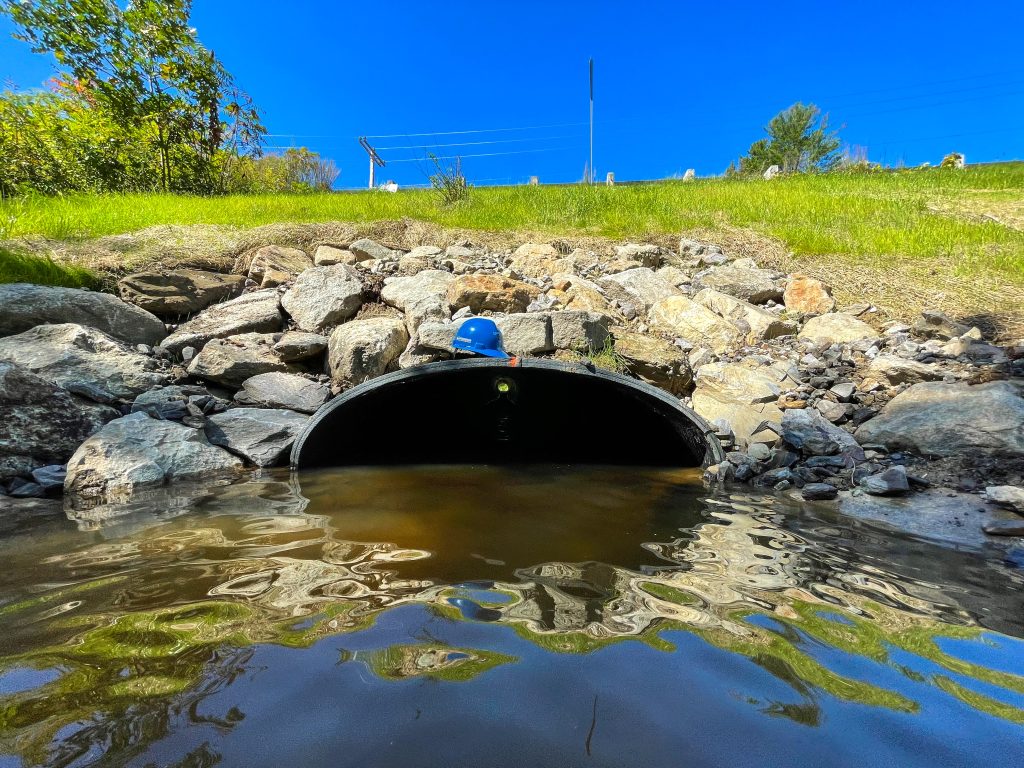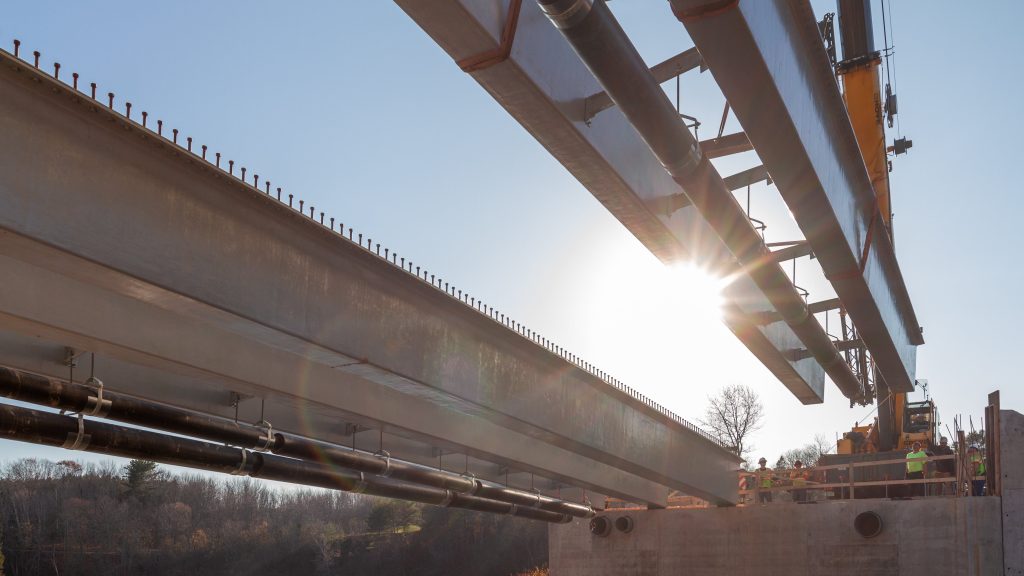Structural Composites
Structural Composites is the design of structures, parts, and forms made from non-traditional materials or hybrid materials in such a way that mimics or exceeds the strength, pliability, and longevity of traditional materials such as steel and concrete. TIDC researches the use of these materials in new and emerging infrastructure applications for bridges, highways, ports, and railways to improve life expectancy, costs, and environmental impacts of these structures.
Structural Composites Featured Projects
Desktop Only
Project 3.04: Testing, Monitoring, and Analysis of FRP Girder Bridge with Concrete Deck
Based on successful testing and supporting research conducted by UMaine on a new, hybrid FRP-concrete girder, a demonstration bridge using this technology in Hampden, Maine was constructed in the 2020. This bridge has been designed in partnership with Advanced Infrastructure Technologies of Orono, Maine. Our prior experience indicates that first-time construction of a new bridge technology invariably brings to light construction challenges and highlights unanticipated design challenges. This project provides a one-time opportunity to monitor and assess performance of a novel in-service composite bridge. Data gathered from the testing, monitoring and advanced analyses proposed as part of this research will help drive acceptance of this novel FRP girder bridge system.
Project 2.11: Culvert Rehabilitation using 3D Printed Diffusers
Due to the increasing number of deteriorating and failing culverts under highways in Maine and across the nation, efforts have been underway to reduce costs by slip lining selected culverts rather than replacing them. While slip lining extends the useful life of culverts, it reduces the diameter of both the culvert and the inlet thus reducing culvert capacity. Utilizing diffuser technology can more than compensate from the reduction in capacity that results from the slip lining process. A partnership between MaineDOT and UMaine has provided a unique opportunity to utilize large-scale 3D printing technology to design and manufacture diffusers with the specific geometry required for each field installation. Large-scale 3D printing technology using low-cost materials shows great promise in designing and manufacturing inexpensive and site-specific diffusers.

Mobile Only
Project 3.04: Testing, Monitoring, and Analysis of FRP Girder Bridge with Concrete Deck
Based on successful testing and supporting research conducted by UMaine on a new, hybrid FRP-concrete girder, a demonstration bridge using this technology in Hampden, Maine was constructed in the 2020. This bridge has been designed in partnership with Advanced Infrastructure Technologies of Orono, Maine. Our prior experience indicates that first-time construction of a new bridge technology invariably brings to light construction challenges and highlights unanticipated design challenges. This project provides a one-time opportunity to monitor and assess performance of a novel in-service composite bridge. Data gathered from the testing, monitoring and advanced analyses proposed as part of this research will help drive acceptance of this novel FRP girder bridge system.
Project 2.11: Culvert Rehabilitation using 3D Printed Diffusers
Due to the increasing number of deteriorating and failing culverts under highways in Maine and across the nation, efforts have been underway to reduce costs by slip lining selected culverts rather than replacing them. While slip lining extends the useful life of culverts, it reduces the diameter of both the culvert and the inlet thus reducing culvert capacity. Utilizing diffuser technology can more than compensate from the reduction in capacity that results from the slip lining process. A partnership between MaineDOT and UMaine has provided a unique opportunity to utilize large-scale 3D printing technology to design and manufacture diffusers with the specific geometry required for each field installation. Large-scale 3D printing technology using low-cost materials shows great promise in designing and manufacturing inexpensive and site-specific diffusers.


